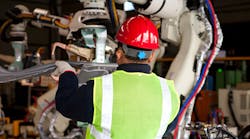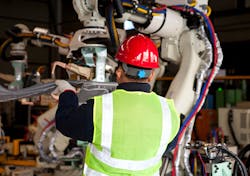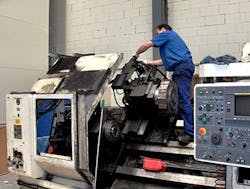10 Things to Consider Before Automating a Facility
Investing in custom automation equipment is an intimidating process. As part of the engineering team, there are several things you need to consider before automating. Custom automation projects are a team effort between your company and the integrator. Choosing a good integrator as a partner is an obvious step. This list includes some of the other important things to address before you kick off the project.
1. Start with a simple scope of work. Simplicity is everything when integrating automation for the first time. It can be easy to get excited and envision a complex machine running flawlessly in your facility. It’s your duty as part of the technical team to start simple and demonstrate a quick win. Purchasing assembly automation is not like buying a product off the shelf. You dictate where the project starts and how far it goes. Start with just one part number, or one assembly process. At this point, don’t worry about gaining maximum value, just focus on getting your team comfortable with automation. Management wants to see a return on investment. The easiest way to show that is to scale back the concept and automate one core piece. The scope of work should be written internally, before any integrators are brought into the picture. Integrators will always try to sell you on a larger vision. Stick to a plan with less risk and build upon it later.
2. Design for expansion. This point is related to No. 1 above. While it is important to stay simple with the initial system, you must have an end goal in mind. Look down the road and consider what other part numbers you would like to add to the system. If not part numbers, what other secondary operations could you add? All these factors must be considered before the initial chassis is designed. Assembly automation is a multi-step process, it’s important to plan out the stages and not shut yourself off to future expansion.
At this point you have written your scope of work. Now it is time to go through a formal procurement process. You should strive to get three quotes from interested companies. Make sure the three quotes come from companies that are actually interested in your project. Integrators that are too busy or not a great fit may just send you a high price out of courtesy. Choosing the quote with the lowest price is not necessarily the right way to go. Either way, it is important to examine each quote to ensure that you are comfortable with the concept. Some websites allow you to post projects for interested companies to approach you.
4. Check references and experience. This step is critical to the purchasing process. Have potential integrators provide you with a couple of customer references that have similar systems. Then make sure you also call former customers of theirs that they don’t give you. It is no different than when you are hiring an employee. The references on a resume are set up by that candidate beforehand to ensure a positive review. Integrators do the same thing with potential customers. Find a few of that integrator’s customers that they didn’t provide to you. Call them and learn about how their experience was.
5. Be specific with components. You need to be specific about the parts and components you want quoted in your machine. This includes: PLCs, vision cameras, robots, sensors, servo motors and drives, HMIs, and more. If you don’t say anything, integrators will select the cheapest option or the brand that they have experience with. Survey your engineering team to see what brands they are comfortable with. Talk to distributors to find out what components are readily available in case of a failure. Websites like Source ESB allow you to search your parts across multiple distributors. You want to stay consistent throughout your facility, if possible.
6. Who owns the intellectual property? The vast majority of companies that invest in automation don’t even think about this issue. The reason is that there is no clear-cut answer. The majority of integrators bury their right to retain the intellectual property in the terms and conditions. An easy way to think about it is if you hired a computer developer to design a website for you. Developers will retain the IP so that they can use some of the code they developed for you on other projects. Integrators do the same thing. They retain the right to reuse the design of your system so they can make it easier on themselves for future projects. This may be okay depending on how much input your team gave during the design process. It is rare that an integrator would sell a carbon copy of your machine to one of your competitors, but I’ve seen it happen. Just make sure this discussion takes place before the purchase order.
7. Clear runoff expectations. What dictates a finished machine? You need to have a conversation about this before you start the project. Acceptance metrics are usually a combination of cycle time and errors per shift. For example, we will accept the machine if the cycle time to assemble one part is under 10 seconds, and only one system fault per four-hour shift. Make sure these expectations are clear.
8. Clear documentation deliverables. Automation companies hate putting together documentation. It is a chore for them and they prefer if the project ended when they delivered the machine. These include: electrical schematics, CAD files, bill of materials, and other supporting documents. You will need these to support or upgrade the system in the future. Make it clear before the project starts what files you want and how you want to receive them.
9. Do a midway point design review. Once the project has been kicked off, you will want to keep a pulse on the initial design. The design review should not be the first time you see the system’s design. Make it a point to have a midway point meeting to review. This will let you sleep easier knowing the design is on the right track.
10. Can you support it? It is important that you have a plan for service and maintenance. Machines break, so make sure you know what to do when this happens. Being able to repair things in-house is always best, but a platform such as FactoryFix.com is an easy way to bring in additional resources when needed.
Patrick O’Rahilly’s platform, FactoryFix.com, aims to help manufacturers by providing on-demand resources to program, service or repair any equipment in their facility.





